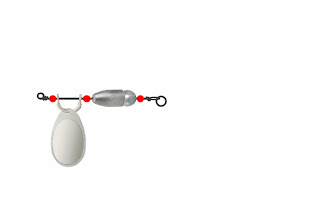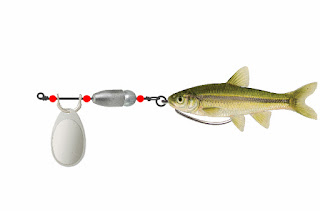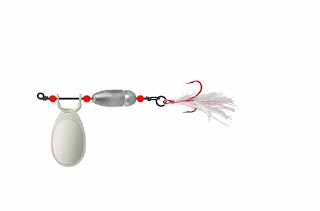Top 10 fishing tips
Off
fishing tips
Off
Category : Deep Sea Fishing Knots, Tips Fishing Knots Off
Fishing is a fun hobby, but many of us who do not really understand the basic techniques in fishing, yes even including in the hobby will be afdol if we know the basic techniques in fishing, the following 10basic fishing techniques:
1. Prepare the Stimulated Feed
Use a bait with a fascination stimuli flavor, shape, color, smell and movement. bait can be either the original bait or artificial bait (lure), usually used artificial bait while fishing at sea.
2. Throw or Throwing Feed
The key to successful fishing event is also determined by the burst technique. Burst must occur at the right point, Hold the rod in the direction perpendicular to the body, directing the eye to the point where the fall of the bait. Move the rod with elbow movement towards the front until kenur perpendicular to the water, swinging back toward the bait. If at that time you are still in doubt, move the rod back forward. Back bait to swing back by moving the rod straight to the head. When bait swung back, accusing the bait along with bait to swing back toward the front of the style of the whip with the rod, do not forget to remove the last kenur you hold with your fingers
.
Category : Deep Sea Fishing Tips, Fishing Tips and Tricks, Tips Fishing Knots, Tricks Deep Sea Fishing Off
Fishing Techniques at Sea
There are some deep sea fishing techniques as we often see. Here we describe several such techniques take from Indonesia fishing Team.
Mancing basic (botton fishing), which is usually obtaind fish is red snapper, pompano, Krapu, and some other basic fish. Sometimes Mackerel and Barracuda can also be provoked in this way. Koncer (Live Bait), is a little unique way, without the use of tin/ballast, so the main kenur mounted spool pin, and then connected whit a wire hook nikelin 10 centimeters long. Decoys are used absolute live bait such as trevally, song, kite, como, bloating, sangir, even baby barracuda.
Category : Deep Sea Fishing Tips, Fishing Tips and Tricks, Tips Fishing Knots, Tricks Deep Sea Fishing Off
Tips and Tricks Fishing Catfish
Pegasius or usually called catfish or jambal is a type of fish thah play on the base. For the following types of fish anglers are fishing tips and tricks this.
Category : Deep Sea Fishing Tips, Fishing Tips and Tricks, Tips Fishing Knots, Tricks Deep Sea Fishing Off
Trikcs and Techniques Deep Sea Fishing
It biases thah deep sea fishing is not only a basic fishing techniques but drifting, jigging, popping, and delay. Thus, three sets kekili is minimum and if able to bring the equipment tums to face any loss (falling in the sea).
Category : asian carp, carp, illinois, invasive species, rivers, U.S. Fish and Wildlife Service, usgs Off
The Asian Carp Regional Coordinating Committee (ACRCC) recently announced that intensive monitoring actions would be implemented in the North Shore Channel of the Chicago River after three consecutive rounds of Environmental DNA (eDNA) sampling yielded positive results for Asian carp DNA in the North Shore Channel.
Three separate eDNA samples sets were taken at the North Shore Channel between June 11th and September 11th, revealing 17 positives for silver carp DNA out of 171 samples.
At present, eDNA evidence cannot verify whether live Asian carp are present, whether the DNA may have come from a dead fish, or whether water containing Asian carp DNA may have been transported from other sources, such as bilge water.
The U.S. Army Corps of Engineers is leading an Asian Carp eDNA Calibration Study (ECALS) with the U.S. Geological Survey and the U.S. Fish and Wildlife Service to reduce the uncertainty surrounding eDNA results and investigate alternative sources and pathways for eDNA detections beyond a live fish.
Full eDNA sampling details can be found at the U.S. Army Corps of Engineers website:
(http://www.lrc.usace.army.mil/Missions/CivilWorksProjects/ANSPortal/eDNA.aspx)
For more Asian carp information, visit: www.asiancarp.us
source: U.S. Geological Survey
Off
 |
| Famous Mepps Inline Spinner |
 |
| (1) Make a loop. Add a bead. |
 |
| (2) Add clevis attached with blade. |
 |
| (3) Add sinkers. |
 |
| (4) Terminate end with another loop. Add split ring. |
 |
| (5) Done! Attached hook & trailer. |
 |
| It should look something like this. |
 |
| Live bait spinning. Minnow or a frog. |
 |
| Fly spinning. |
 |
| Bare treble hooks. |
Powered by Blogger | Theme mxs | Converted by LiteThemes.com